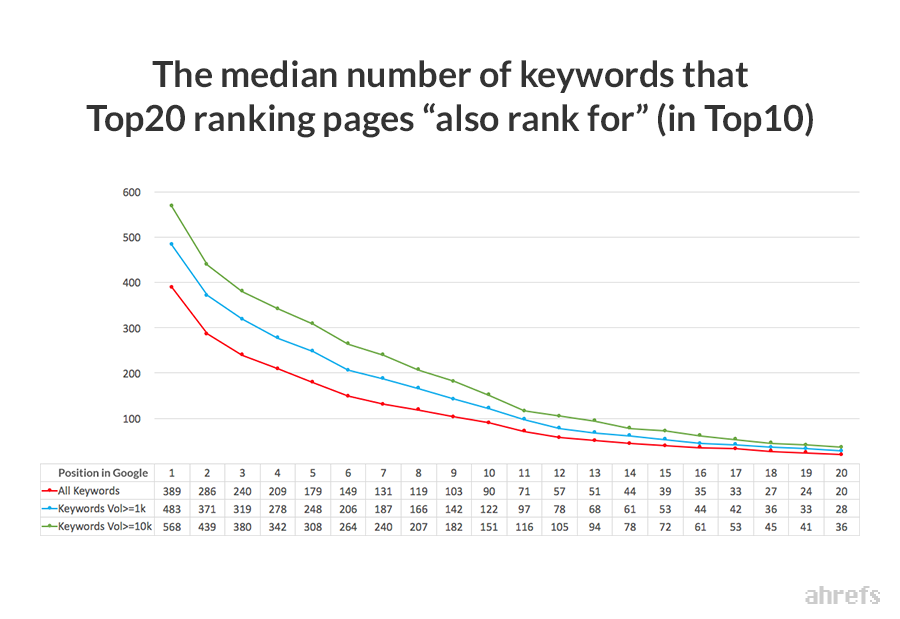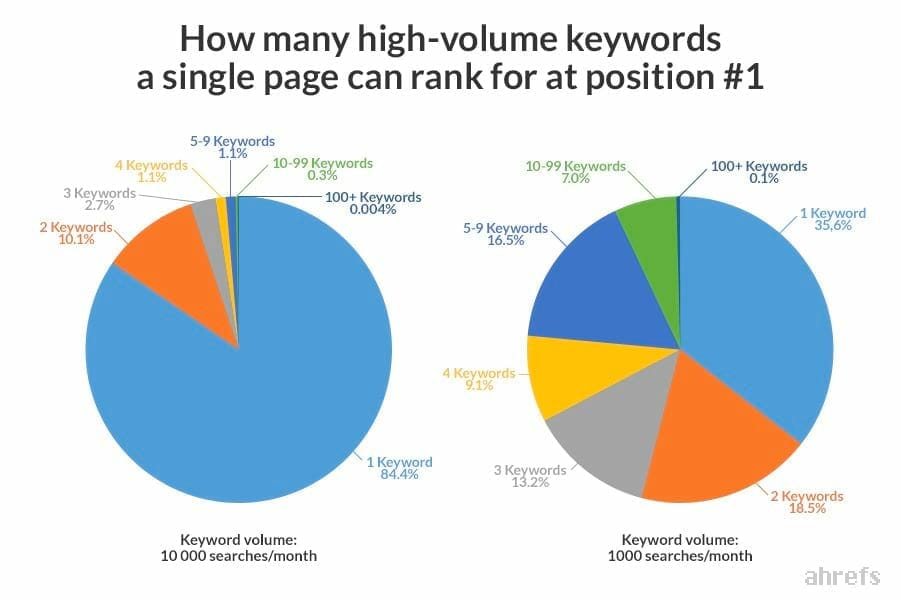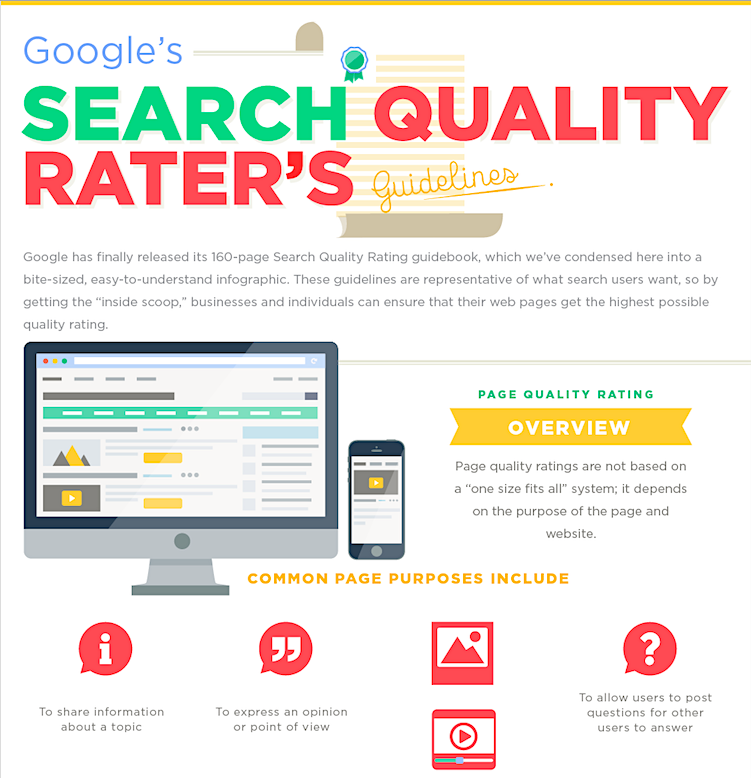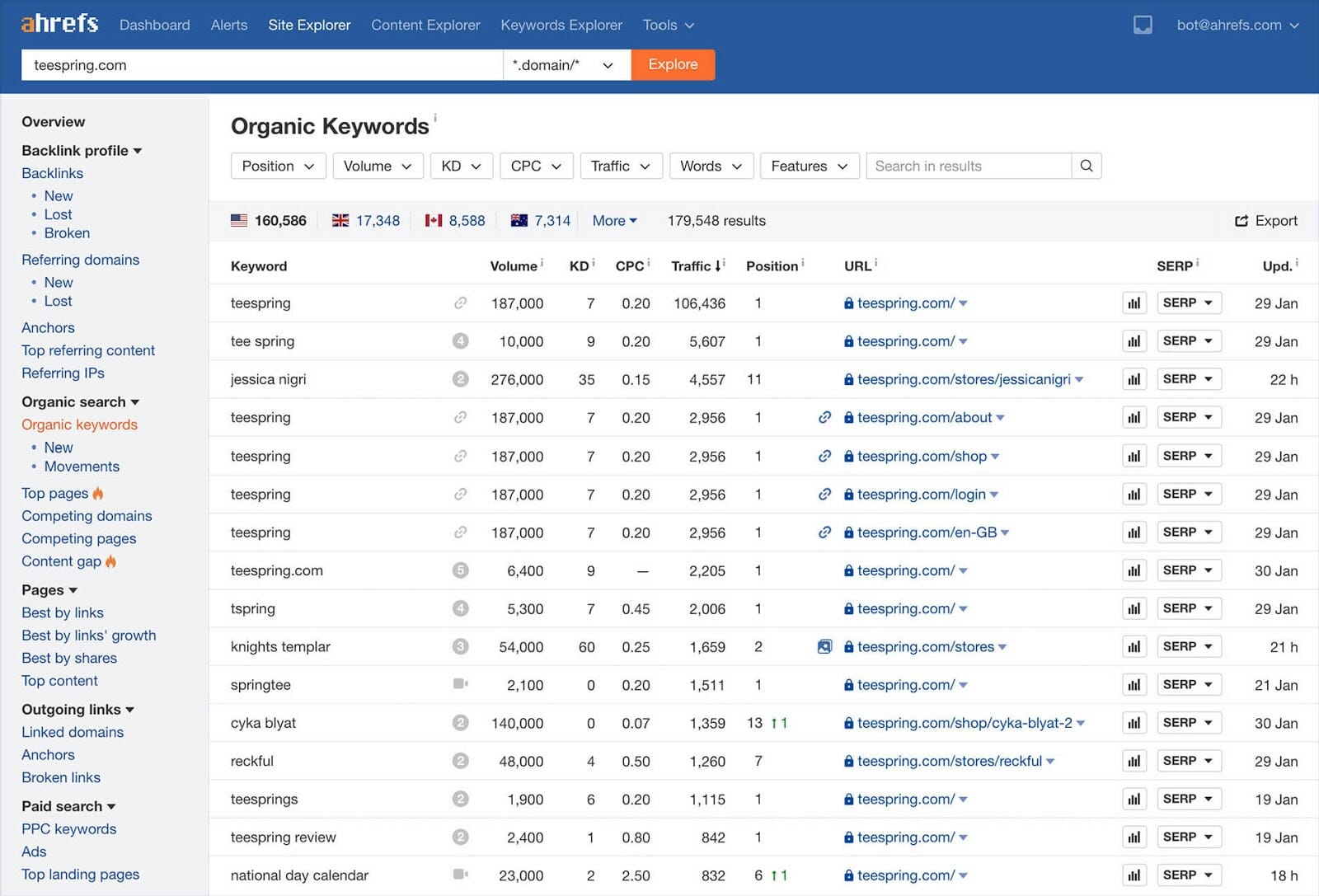Let’s face it. Most of us aren’t writing blog posts for the fun of it. We write them because we want them to serve a purpose for our business, even if that purpose is simply increasing engagement with a target audience. But often, businesses want the content they write to support a measurable goal, whether that’s generating leads, driving sales or increasing organic search visibility.
If you’re using blog posts for SEO, the question then becomes: Can the blog posts I write serve double-duty by ranking for multiple keywords? Or is it better to focus each post on a single keyword to maximize ranking opportunities?
I’ll be direct with you here. There’s no right or wrong answer to these questions. But to help you figure out how to best optimize your blog posts, I’ve pulled together a few perspectives on whether you should focus your content on a single keyword or multiple target phrases.
How I Optimize My Posts
I’ll start with my approach to optimizing blog posts here on Single Grain and for the digital marketing clients we work with. Typically, I choose to focus on one ideal keyword first. Then, once it’s ranking, I’ll go back into Google Search Console and look for other keywords on that page for which I’m ranking, but that I’m not yet on page one for. I’ll then layer those keywords to increase their rankings.
Part of the reasoning behind my approach is some research that Tim Soulo published on the Ahrefs blog back in 2017. He and his team looked at three million random search queries and their top-ranked pages, trying to understand how many other keywords these pages were ranking in the top 10 for:

According to Tim, “It looks like the average #1 ranking page will also rank in the top 10 for nearly 1,000 other relevant keywords (while the median value is more than two times smaller — around 400 keywords).”
Tim’s team also looked at whether these results held when considering search volume. Basically, could a page rank for multiple high-search-volume keywords? Or could it only rank for multiple keywords if the search volume of each was relatively low?
Perhaps unsurprisingly, the team discovered that the latter is true. “It turns out that ranking for 2-3 keywords with over 1,000 searches per month is quite common,” Tim writes. “Ranking for more than one 10k+ keyword with a single page is very rare.”

The reason Tim’s research informs my approach is that it appears there’s a natural tendency for high-ranked pages to rank for multiple keywords. As long as I’m choosing the right keyword to begin with, I can – to a certain degree – trust that the strategies I’m using to optimize my content for one keyword will support its ability to rank for others, whether or not I target them specifically.
Neil Patel takes a similar approach. When he’s creating content, he doesn’t consciously try to rank for anything specific, whether that’s a single keyword or multiple keywords.
Instead, he starts with topics, understanding that just by writing on a single topic you’re going to naturally include keywords that relate to it. After that, he’ll wait a month or two, see what he’s getting traction for, and then go back to optimize the post to focus on one or more keywords.
Dive Deeper:
- The Content Marketer’s Guide to Keyword Research
- 9 Effective SEO Techniques to Drive Organic Traffic
- 10 Ways to Generate Topics and Write High-Ranking Blog Posts
- Multi-Channel PPC Advertising Case Study: Boosting Your ROI
The Hit or Miss Nature of SEO
Part of the reason Neil and I both take a “wait and see” approach is that SEO, in general, is hit or miss by nature. Most people don’t talk about it, but just because you’re good at SEO, that doesn’t mean you’re always going to rank for a specific keyword. Even if you know exactly what to do, there are factors outside of your control.
Maybe there’s another site that’s out there crushing it that’s going to take a lot of work to unseat. Maybe the user metrics aren’t there or the backlink count isn’t there or the social shares aren’t there. If people don’t care for the content you’ve created, it might not get the traction it needs to rank.
Blogging – like SEO – is hit or miss, but you won’t know how your post is going to land until it’s out there. The last thing you want to do is to put a ton of time into optimizing your posts for different keywords, only to have it fall flat with your audience and never rank in the first place.
A Better Approach to Blog-Specific SEO
So if you know that blog posts naturally have the potential to rank for multiple keywords, and if you know that some of your blog posts are going to fail no matter what you do, how do you approach blog-specific SEO?
Here’s a five-step process for putting it all together:
- Step 1: Write great content around a single keyword or topic
- Step 2: Wait 30-60 days
- Step 3: Determine which keywords your post is ranking for
- Step 4: Find additional keywords
- Step 5: Update your post
Step 1: Write Great Content Around a Single Keyword or Topic
Poor-quality content isn’t going to rank well for you (at least, not for the long-term). So don’t waste time on it. Instead, focus on producing high quality content – even if that means producing less of it than you would if your standards were lower.
When I say “high quality,” there are a few metrics I use to make sure I’m hitting the mark:
- Is my content thorough enough? According to research by Brian Dean of Backlinko, “The average Google first page result contains 1,890 words.” If I’m not hitting that mark, there had better be a pretty good reason (such as a micro-topic that can be covered completely in fewer words).
- Is my content better than what’s ranking currently? This requires some digging, but it’s important to do. If you can’t conclusively say that your content is better, why should it rank higher in the search results?
- Is my content well-researched and accurate? As you can see in this post alone, I’m a big fan of including external perspectives and industry research in order to strengthen the observations and experiences I share in my content.
These are just a few of my personal checks, but reading through Google’s Search Quality Evaluator Guidelines will give you a good idea of the standards you need to hit. And again, remember that you can focus on one keyword here or just write to a specific topic. Test both to see which process works best for your unique business, industry and keywords.
Check out the infographic we created from Google’s 160-page guidelines:

Dive Deeper: The Best Way to Track Your Keyword Rankings in 2023
Step 2: Wait 30-60 Days
Once you’ve taken your article live, don’t check your rankings for at least a month or two. But don’t just sit back and rest while you’re waiting, either. Use this time to work on promoting your blog post using the simple content promotion checklist I share in this video:
Dive Deeper:
- What Are the Biggest Website Mistakes that Are Lowering My SEO Ranking?
- What’s the Ideal Number of Blog Posts to Write Each Week?
- Do You Really Need to Write 1,890-Word Blog Posts to Rank on Page 1?
- The Best Way to Track Your Keyword Rankings: An SEO Expert’s Strategy for 2019
Step 3: Determine which Keywords Your Post Is Ranking For
Once your post has been live for a bit and you have a few backlinks coming in (hopefully), use tools like Google Search Console or Ahrefs to find out what you’re ranking for.
In Google Search Console, enter the specific URL of your blog post and use the Search Appearance tab within the Performance report to see where your article is currently ranking:

And in Ahrefs, use the Site Explorer > Organic Search > Organic Keywords report to find your content piece’s rankings for different keyword variations:

If you optimized your blog post for a particular keyword, check its performance using these tools. If you didn’t, take a look at the keywords you did wind up ranking for (if any), and determine whether or not they’re appropriate for your business. If they are, increase your presence for these keywords using the tips in the next step. If they aren’t, use the tips in the next step to optimize your post around a different, more suitable keyword.
If your post isn’t ranking at all, it may be worthwhile to wait a little longer and focus on promotion more before you go further with this process. According to Ahrefs, it can take Google anywhere from two to six months to solidify a URL’s position in the SERPs. If it never winds up ranking, decide whether you want to keep investing in the post – or whether you’re ready to repeat the process with a new blog post.
Step 4: Find Additional Keywords
Assuming your post is getting some traction, you can start digging up additional keywords for which you’d like it to rank.
If you have a predefined SEO strategy you’re following that includes multiple related keywords, they may be prime candidates to go back and add to your post. But if you need further inspiration, start with any keywords on the lists you found within Google Search Console and Ahrefs for which you’re ranking on the second page (positions #11-20). It may be easier to increase the number of results pages in which you rank by adding these keywords than to go find unrelated keywords you don’t yet have a presence for.
Neil suggests that trying to rank a post for multiple keywords works best if there’s overlap between two or three keywords. That said, if you’re going to add keywords to your post, make sure they’re keywords you actually want to rank for. If the search volume isn’t there, don’t build a keyword into your post just because it’s related or because you think it’ll be easy to rank – the effort is never going to pay off in terms of ROI.
Dive Deeper:
- 3 Things We’ve Learned From Ranking For Competitive Keywords With Viral Traffic
- 7 Steps to Stardom: How to Direct Web Traffic to Your New Blog
- Overlooked SEO: Optimizing Images and Video For Search
- How to Understand Searcher Intent and Use It to Boost SEO Rankings
Step 5: Update Your Post
Finally, once you’ve chosen additional keywords for your post, go back and work them into your site’s headings, body copy, image ALT tags and other key areas (being careful to keep your post from feeling robotic or unnatural, of course).
Then, repeat the process above from Step 3, tracking the performance of the keywords you’ve added. You won’t use this information to decide what else to add (as in Step 4), but over time, monitoring how the inclusion of multiple keywords performs will help you refine this strategy so that your future posts can be even more effective from an SEO standpoint.
Finding What Works for Your Blog
Whether you decide to optimize for a single keyword or multiple keywords from the start, SEO is all about trial and error.
You can’t control what people are typing into Google, and you can’t control what Google will do with the content you publish. You can spend hours optimizing a particular blog post for a specific word or phrase, only for it to fall flat with your audience and the search results.
Instead, focus on the things you can control. You can figure out which keywords will be most valuable for your business or which topics they most want to hear from you on. You can control the quality of the content you produce. And you can invest in promotion to give your individual blog posts the best possible chances of ranking.
Repeat this process over and over again, watching how the search engines respond to your efforts. With time and continual investment, you’ll be able to determine which optimization strategy is most appropriate for your blog.







